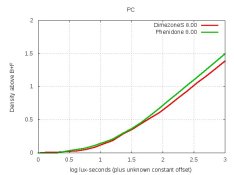albada
Subscriber
A sulfite is what is really needed.
Last night I discovered a way to provide sulfite in a propylene glycol concentrate!
I'm aware that sodium and potassium sulfite do not dissolve in PG. But last night I decided to try putting potassium sulfite (PS) in PG as a suspension. I poured a 45% aqueous solution of PS into some PG, and heated it to 90-98C for a while to drive out the water. The resulting suspension works well. The PS does not coalesce into a gooey mass as sodium sulfite does (which I also tried). Instead, the sediment of PS remains a fine powder which is easily shaken back into suspension. I let it sit overnight in a capped test tube, and shook it this morning, which gave a perfect-looking suspension with no residual sediment on the bottom.
This suspension technique appears to be a plausible way to provide sulfite in a concentrate. But one must remember to "Shake well before using".
Any comments from chemists about this? Has this idea been tried and rejected in the past for some reason?
Mark Overton







